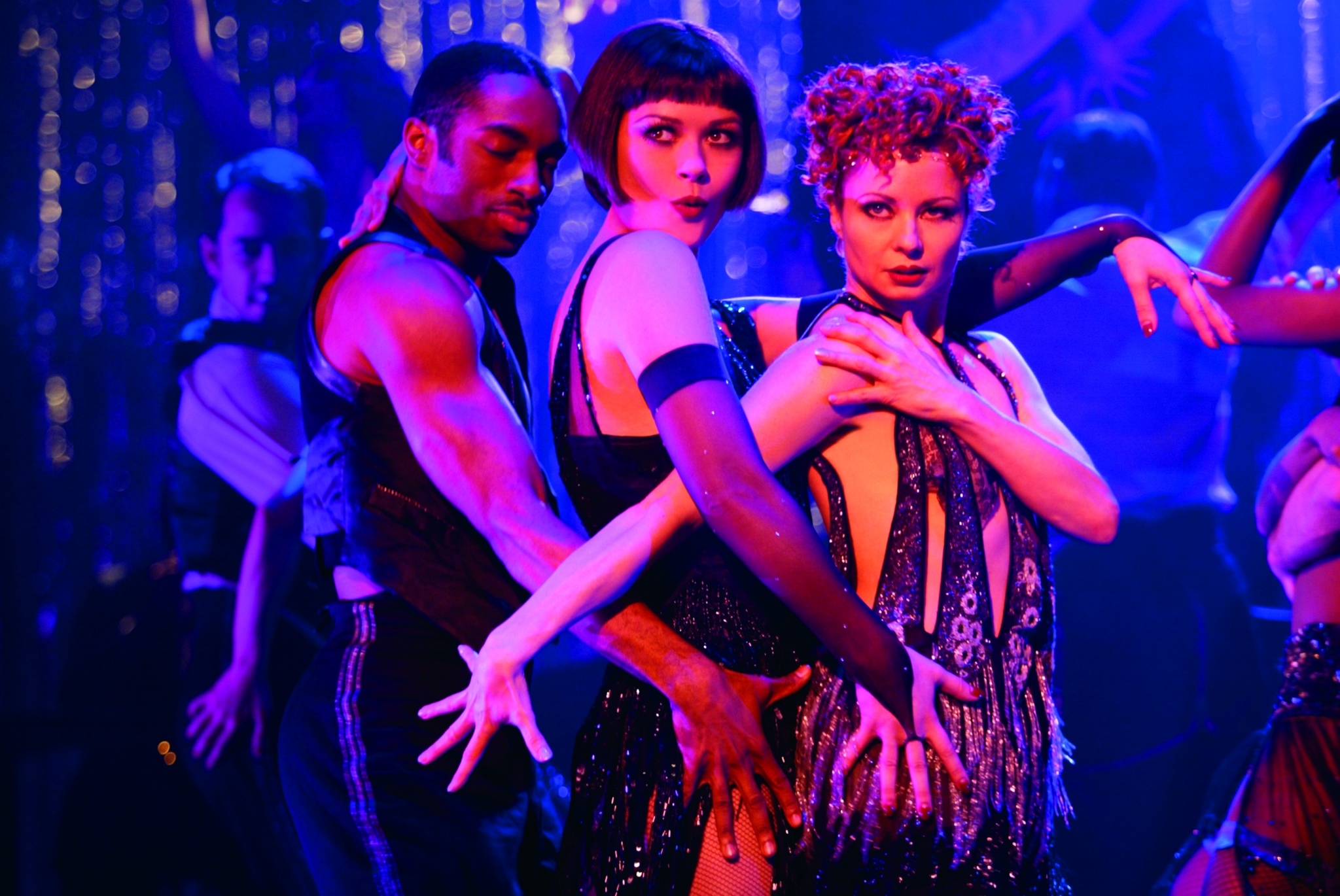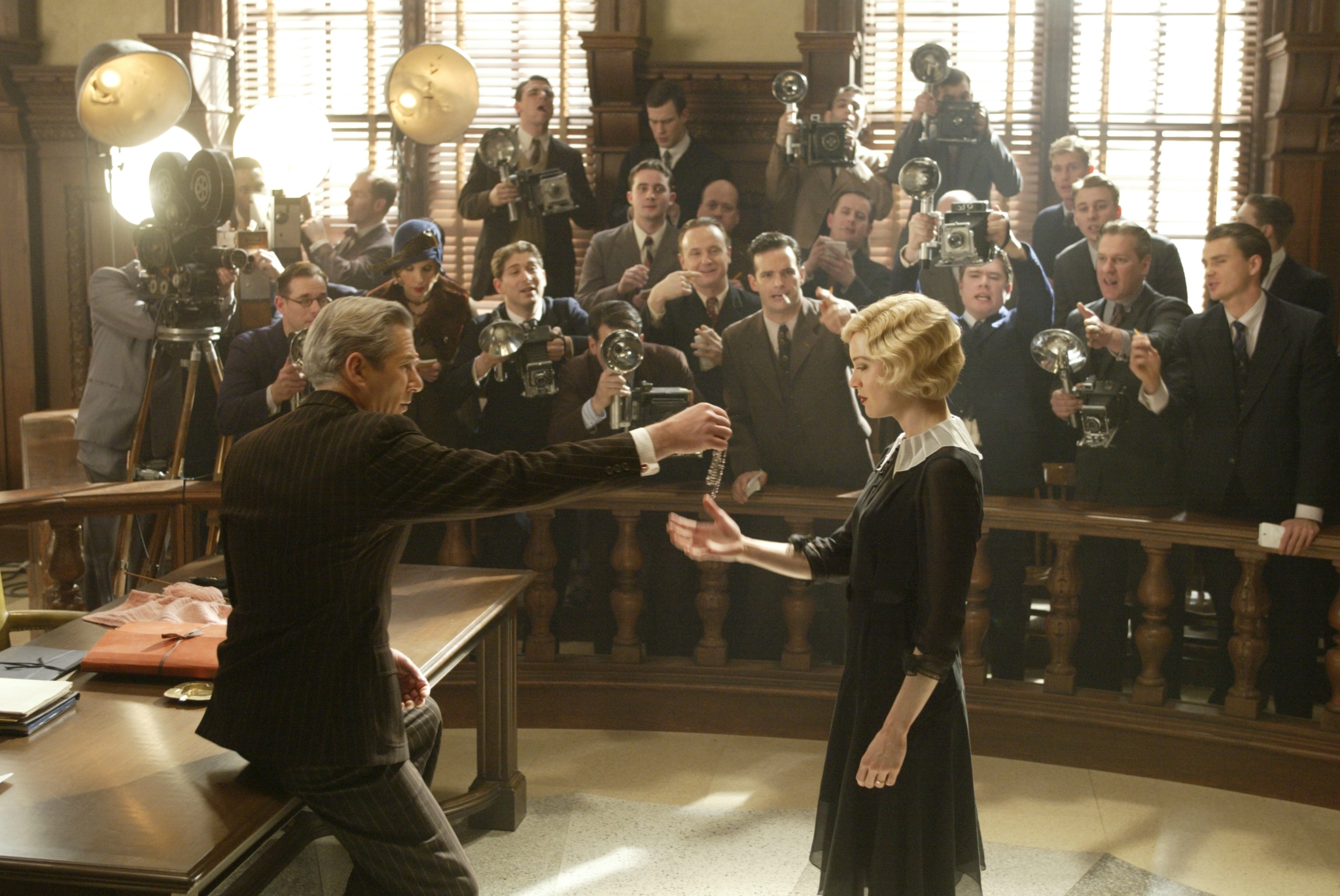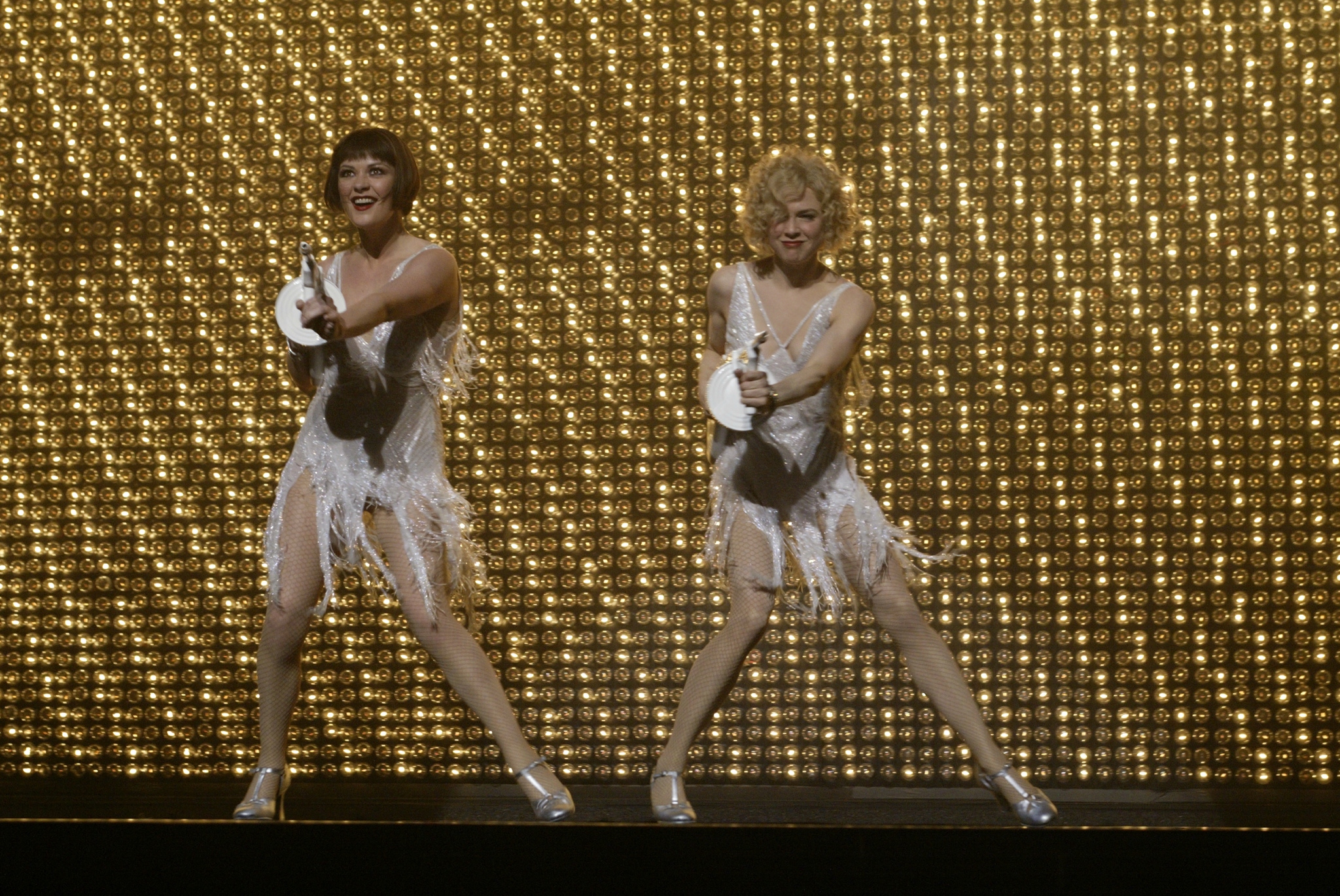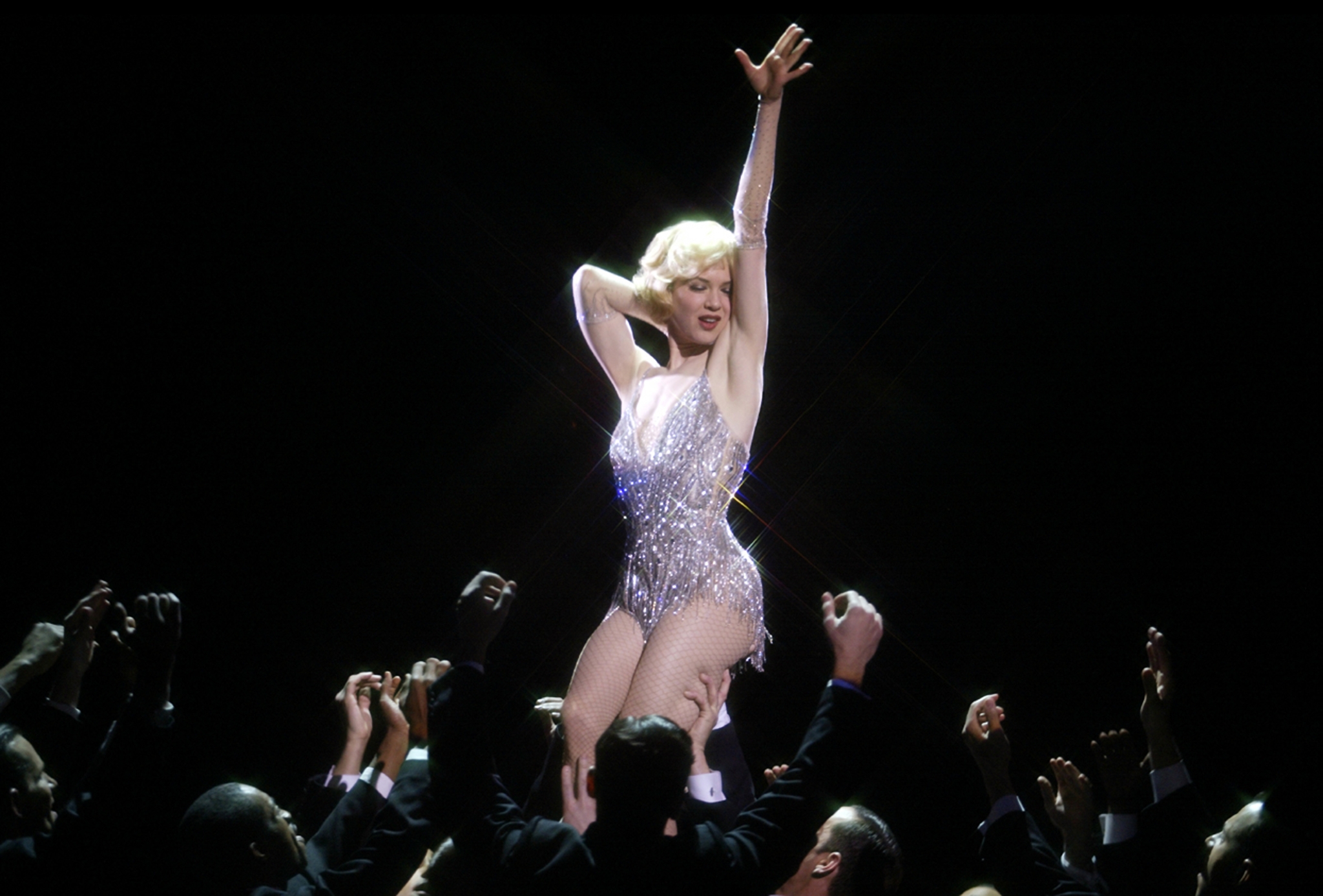
Chicago: The Name on Everybody’s Lips
Dion Beebe, ASC, ACS looks back on filming this iconic modern movie musical, 20 years later.
Images courtesy of Paramount Home Entertainment
When Chicago was released in 2002, it revitalized the idea of the movie musical, demonstrating that song and dance could be both profitable and popular in the 21st century. Nominated in 13 categories, the film won six Academy Awards, including Best Picture, and made over $300 million at the box office. For cinematographer Dion Beebe, ASC, ACS — who earned an Oscar nomination, among other honors, for his camerawork on the film — Chicago was a new adventure into a theatrical type of filmmaking he had not embarked upon before.
“I walked into the studio and the piano is playing, the dance captain is yelling and all these amazing dancers are moving in sync. I looked around and thought, ‘This is definitely a world I want to be a part of.’”

When Beebe was approached to shoot Chicago, he had not yet seen the stage musical: “I was literally going to see it on the West End when my agent called me and said, ‘Are you interested in adapting this musical called Chicago?’ I hadn't seen it yet. I just remember coming out of the theater thinking, ‘Oh my God, how do you turn that into a movie?’”
Director Rob Marshall and producer John De Luca became interested in Beebe after watching a three-minute showreel of his work. After preliminary phone calls, the filmmakers met at a stage in New York City. “It was like a moment out of A Chorus Line,” the cinematographer remembers. “Rob and John were casting the dancers for the show. I entered this stairwell and there were all these dancers in leotards and leggings, stretching all around me. I walked into the studio and the piano is playing, the dance captain is yelling and all these amazing dancers are moving in sync. I looked around and thought, ‘This is definitely a world I want to be a part of.’ I haven't really looked back since.”

Chicago marks the first collaboration between Beebe and Marshall, who have gone on to work together on Memoirs of a Geisha, Nine, Into the Woods, Mary Poppins Returns and Disney’s upcoming live-action version of The Little Mermaid. For Beebe, the prolific collaboration has worked because of their ability to lean on each other’s skills: “Our collaboration is built largely on trust. Before he became a filmmaker, Rob was a dancer and choreographer and then a director on Broadway. Film wasn’t his first language. He understood musicals incredibly well and how to tell them. The tools of movie making and the technicalities of it were of a secondary interest to him. Rob was about story and about the show. He was looking for someone who he could work with who could ultimately help bring his ideas to the screen.”

Beebe’s visual language came more from music videos than movie musicals. “For my generation, the Hollywood musical had sort of ebbed away,” he explains. “There weren’t a lot of movie musicals when I was growing up. We were more the MTV generation of music videos, so my interpretation of visualizing songs was influenced by that. In the end, a very different format.” Beebe was able to meld his visual sensibilities with that of classic movie musical aficionado Marshall successfully enough to spark their long collaboration.
For Beebe, he sees this work as a move into another era: “We were somehow ready again to enjoy telling stories through song. It has such classic origins in Hollywood cinema and there are so many incredible movie musicals. Maybe audiences got a bit too cynical in the ’70s to really appreciate the movie musical. That wave through the 2000s, of more movie musicals was possibly coming out of MTV and music videos — that sort of visualization of music. In the end, there has to be an acceptance from the audience to suspend that disbelief and take that journey together.”
“One thing I learned a lot from Chicago is how to use theatrical lighting. When Rob and I do musicals together, there are these lighting cues and choreography that are incredibly precise on stage.”

Both Beebe and Marshall saw grounded transitions as a fundamental component to making Chicago believable. “Rob very much had this idea, which I think is correct, that in musicals you had to earn the song. It’s not just on a whim that you start singing. You have these story elements of the musical that set up the song. The idea of how you transition to songs was very important to him and it was something that we really connected on.
“I think when musicals do that, it's sort of magical. It really engages with what cinema is, which is fantasy, the ability for us to explore fantasy, reality to move between the two. Musicals, I think, are sort of perfect for the format. They're very much what cinema is about.”
The transitions between song and dialogue were worked out in a rigorous pre-production period. “The rehearsal schedule is a minimum of six weeks with Rob,” says Beebe. “With Chicago, it was the first time I'd done such a comprehensive rehearsal like that. It's almost like putting on a show. We go in, start to rehearse, and break down the story elements as well as the choreographed dance sequences. It's incredibly thorough. We really run through the entire show from top to bottom, so that when we hit day one, we could literally take the show on the road. It's pretty buttoned-down and that allows everyone to be incredibly prepared, whether it's Colleen Atwood’s costumes or John Myhre’s sets.”
The intensive rehearsal allowed Beebe to figure out the nuance of working with hundreds of theatrical lights for each sequence: “One thing I learned a lot from Chicago is how to use theatrical lighting. When Rob and I do musicals together, there are these lighting cues and choreography that are incredibly precise on stage. When we're choreographing and developing sequences, we're also building sort of a lighting design around the choreography. So whether it's specials coming up over a dancer or a certain sort of beat, there can be hundreds and hundreds of lighting cues in one song.
“At the time, film lighting was one thing, and theatrical lighting was very much separate. Now, these automated, programmable units are very much tools for a lot of cinematographers.”
Beebe relied on his storytelling instincts, as well as Broadway and West End lighting board operators, to obtain his vision in a time before wireless DMX. The dance numbers would be shot in their entirety each take in order to allow the dancers to complete the whole choreography without stopping awkwardly for the ease of camera.
“As soon as you have a camera and an actor, it’s choreography; it doesn’t have to be a dancer.”

The emphasis on choreography went beyond the song and dance sequences. It became a key part of the way that Marshall and Beebe have worked together ever since. “As soon as you have a camera and an actor, it's choreography; it doesn’t have to be a dancer,” he says. “When an actor moves across the set and the camera meets them or circles around them, it’s all choreography. It's this sort of understanding, you know, between Rob and I, of the movement of the camera and the actors in the space. It’s another thing that really brought us together as collaborators. We're always in that dance together.”
Twenty years later, that dance continues to enthrall.
Beebe went on to shoot feature films including Collateral, Miami Vice, Nine, Green Lantern, Edge of Tomorrow, and Gemini Man. He won an ASC Award and Academy Award for his work with Marshall on Memoirs of a Geisha. His work on Collateral and Nine was also nominated for ASC Awards.
The archival video below was included in Paramount Home Entertainment’s recent 20th-anniversary, limited-edition, Blu-ray SteelBook release of Chicago. It offers some insight on the complexity of shooting the picture and the need for close collaboration between Marshall, Beebe, the cast and crew.






